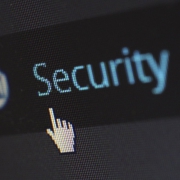Often times, we often hear about data breaches on the news. These may involve huge corporations and government offices being hacked. However, the truth is that all businesses are vulnerable to attacks. Whether you manage a big or a small company, you can still be a victim of hacking and data breach.
Unfortunately, small businesses are prone to being hacked because these companies are not well protected. It may be because of the lack of resources or lack of employees to handle the cybersecurity division.
Hackers can get into big companies without a hitch. What is gonna to stop them from going for the small fishes in the sea? Small companies are easy money for these hackers because they cannot afford a tight level of online protection. With that being said, I will list some cybersecurity tips that every small business can apply.
1. Create Better Passwords
The first thing to do create strong password to protect your devices and your network. This step should be mandatory, and do not even try to implement “temporary” weak passwords. If you have a secure network, you should follow strict standards.
Strong passwords are needed, and the one should change/update on a regular basis. Apply certain policies in order to avoid any accidental sharing of passwords even to co-workers.
2. Set Certain Restrictions
Next, you should not only depend on passwords. A secure defense contains layers upon layers of security. This is to avoid any sensitive data safe from going out. This means you should limit the access of certain information. In addition, you should put extra layer of password, encryption, and more.
3. Monitor the Devices Used
Being a newbie, your business cannot afford getting laptops and personal computers at the time being. Naturally, your starting group of employees will have to use personal devices when working.
To make sure that company data won’t leak, it will help if you install a monitoring software on their devices. Implement rules to make sure the devices are secured such as installing security updates, and changing passwords from time to time.
These are security measures in order to protect your business. Hence, you have to clearly explain to your employees that this is not invasion of privacy. You just being careful especially if employees may put the business at risk while using their own devices.
4. Train Your Employees About Cybersecurity
Even if you apply the best cybersecurity solution there, your employees can unknowingly trigger a data breach. So, train your employees regarding the repercussions of their actions. Hence, you have to make sure that all your employees learn on how to properly use company resources with compromising security. Lastly, they should know that security should be the top priority.
Level up your cybersecurity!
Cyber attacks are NO joke, and you should not take it lightly. These cyber criminals can bring down businesses if they want to. Luckily, you can protect your business with the help of IT service providers such as Omnipotech. It’s about time to take cybersecurity very seriously!



